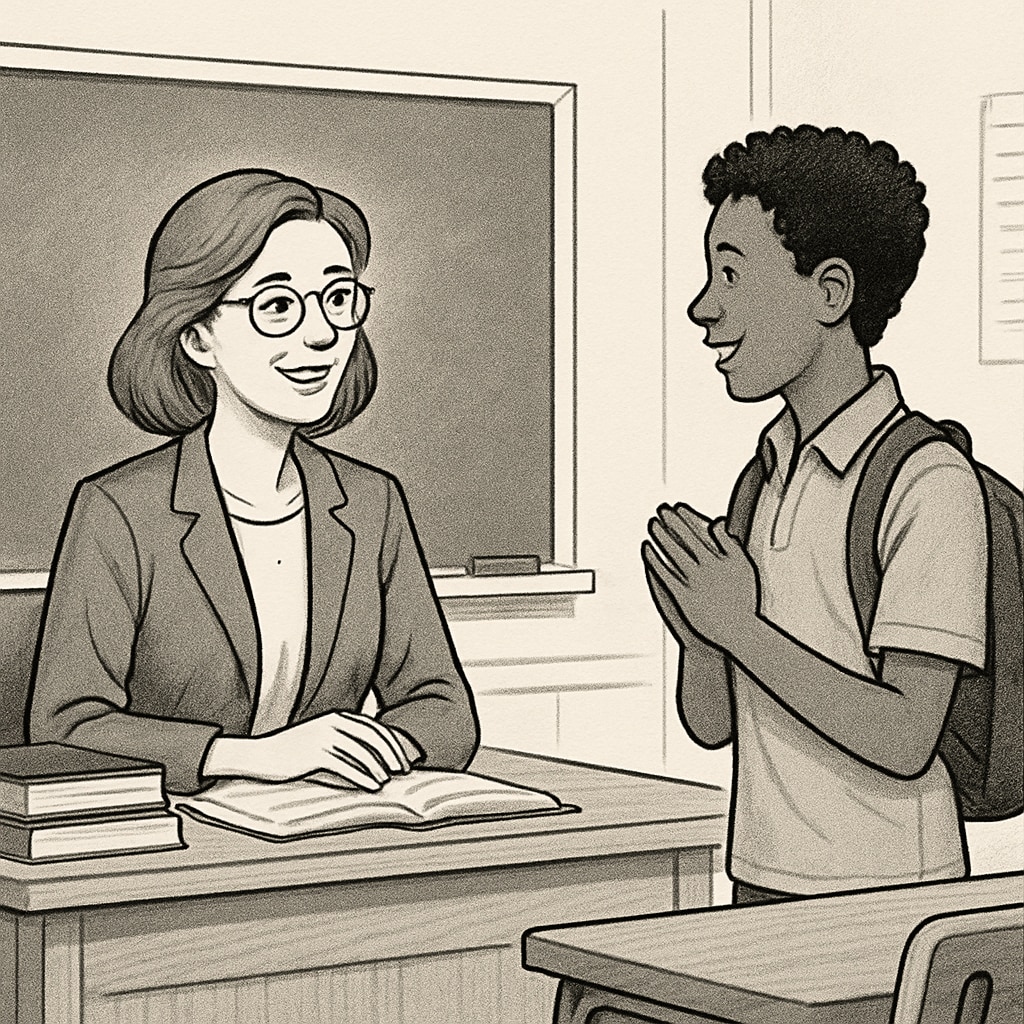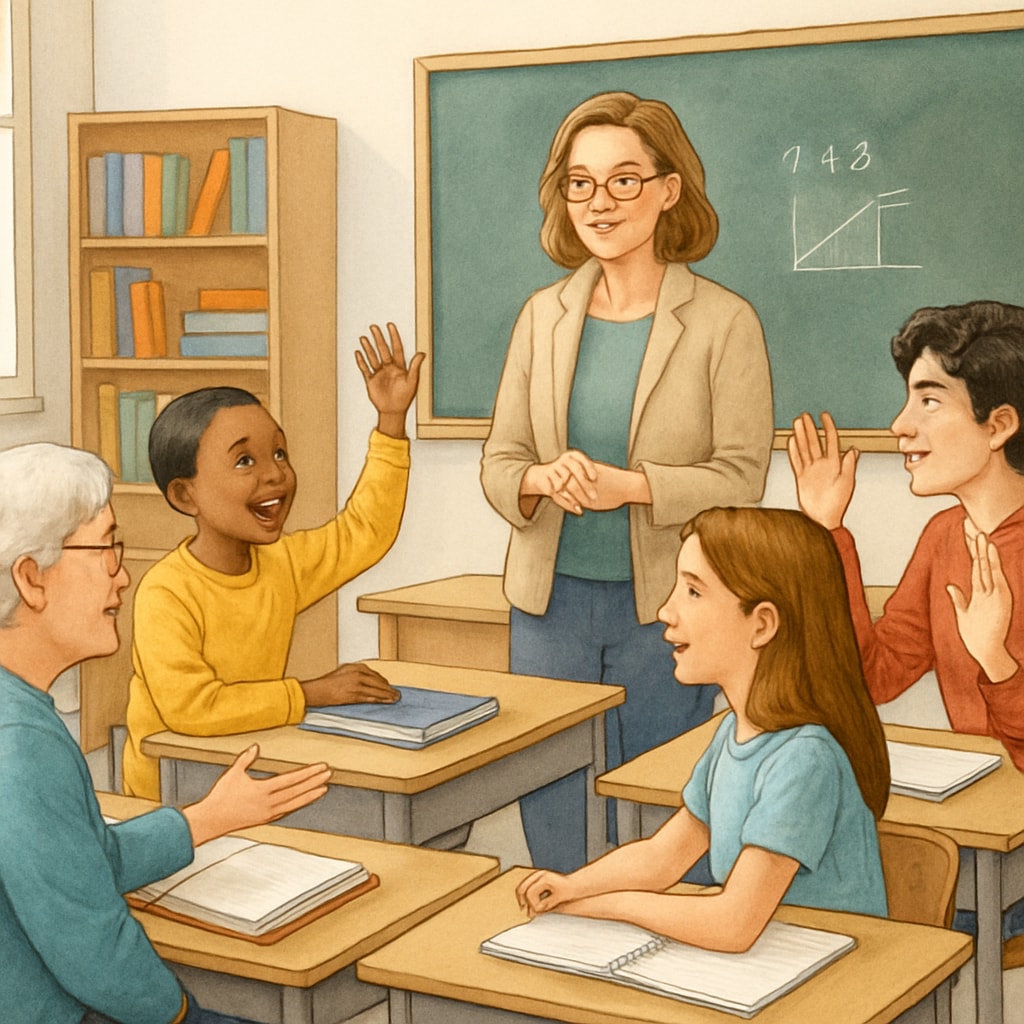In the tapestry of K12 education, moments of transformation can often be found in the simplest exchanges. One such moment occurred when a student, after class, approached their teacher and expressed heartfelt appreciation. This gesture of gratitude not only illuminated the profound impact teachers can have on their students but also underscored the importance of fostering meaningful teacher-student connections. The themes of student gratitude, teacher influence, and classroom interaction blend together in this story to reveal the deep educational significance of being seen and valued.
The Impact of Gratitude on Teacher-Student Connections
Gratitude, while seemingly a small act, carries immense weight in the context of education. When a student takes the time to thank their teacher, it signifies that they feel seen, valued, and understood. For educators, these moments of appreciation serve as a reminder of their vital role in shaping not only minds but also hearts. Research shows that positive teacher-student relationships can improve academic outcomes and foster emotional resilience in students (teacher-student relationship on Britannica).
In this instance, the student’s words of gratitude were not only a reflection of their personal growth but also a testament to the teacher’s ability to create a supportive and respectful learning environment. Such interactions remind us that education is not just about imparting knowledge but also about nurturing a sense of belonging and self-worth in every learner.

Creating a Classroom Culture of Respect and Listening
Building a classroom environment where students feel comfortable expressing themselves begins with mutual respect and active listening. When teachers genuinely listen to their students’ concerns, ideas, and feedback, they foster trust and openness. This, in turn, encourages students to engage more deeply with the learning process.
For example, consider a teacher who actively acknowledges the unique strengths of each student. By recognizing a student’s efforts, whether in academics, creativity, or collaboration, educators show that they value the individual contributions of each learner. As a result, students are more likely to develop a positive attitude towards learning and feel empowered to contribute actively to classroom discussions.
Additionally, listening involves not just hearing words but understanding the emotions behind them. Teachers who practice empathetic listening can identify potential issues early on and provide the necessary support to help students navigate challenges. This approach aligns with the concept of “emotional intelligence” in education, which emphasizes the importance of understanding and managing emotions to build stronger interpersonal relationships (emotional intelligence on Wikipedia).

How Teacher Influence Shapes Lifelong Lessons
The influence of teachers extends far beyond the classroom walls. A single moment of validation or encouragement can stay with a student for years, shaping their self-perception and aspirations. In this scenario, the teacher’s care and dedication left a lasting imprint on the student, prompting them to express gratitude.
Teachers have the power to model behaviors such as kindness, resilience, and curiosity, which students carry into their lives. By fostering a culture of appreciation and respect, educators can encourage students to not only value their own education but also recognize the contributions of others. These lessons ripple outward, influencing how students interact with their peers, families, and communities.
In addition, the act of receiving gratitude can be deeply motivating for teachers. It reinforces their sense of purpose and reminds them of the profound impact their work has on shaping future generations. Moments like these serve as a powerful reminder that teaching is not just a profession—it is a calling.
Fostering Warmth and Authenticity in Education
To create an environment where such moments of gratitude can flourish, educators must prioritize authenticity and warmth in their teaching practices. Here are some actionable strategies to achieve this:
- Encourage open communication: Regularly invite students to share their thoughts and feelings about the learning experience.
- Celebrate small victories: Acknowledge and celebrate students’ efforts and achievements, no matter how minor they may seem.
- Model gratitude: Teachers can set an example by expressing gratitude to their students, colleagues, and school staff.
- Provide constructive feedback: Deliver feedback in a way that supports growth and encourages students to see mistakes as learning opportunities.
These practices not only enhance the classroom dynamic but also contribute to a broader culture of kindness and respect. When students feel genuinely valued, they are more likely to thrive both academically and personally.
In conclusion, the power of being seen and appreciated cannot be overstated. The simple act of a student expressing gratitude reveals the profound impact of teacher influence, the importance of classroom interaction, and the transformative potential of education. As educators, let us continue to create spaces where every student feels heard, respected, and inspired to express their own gratitude.


